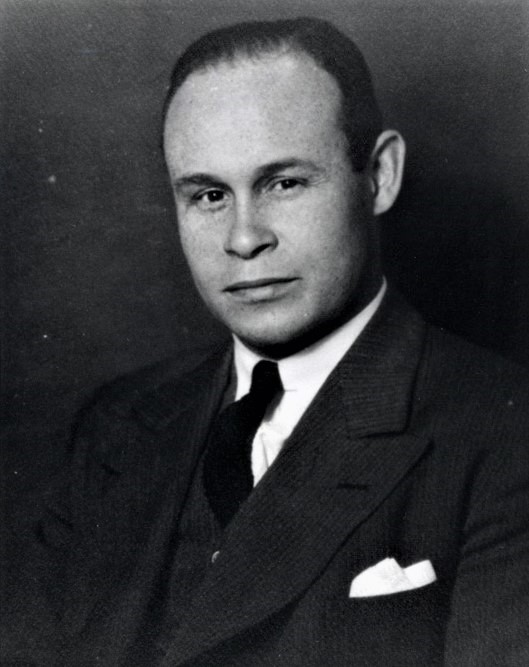Charles Richard Drew was a medical researcher, surgeon, and the first African American to be appointed as a medical examiner for the American Board of Surgery. His research and work led to the development of processing and storing plasma in blood banks.
Drew was born on June 3, 1904, in Washington, DC. His mother, Nora Rosella Burrell Drew, was the daughter of a European sea captain, and was trained as a schoolteacher. His father, Richard Drew, was a light skinned African American carpet-layer, as well as the secretary and only non-white member of the Carpet, Linoleum, and Soft-Tile Layers Union in the District of Columbia.
Raised in an upper-middle class neighborhood, Drew first attended Stevens Elementary, then Dunbar High School. Drew was an excellent student and athlete, exceeding in four sports, which earned him the James E. Walker Medal, and an athletic scholarship to Amherst College in Massachusetts once he graduated from Dunbar in 1922. He continued to excel in athletics, but the death of his sister and an injury in his senior year changed his focus towards medicine.
Drew earned his AB from Amherst in 1926 and worked as the instructor of biology and chemistry as well as the athletic director at Morgan College (now Morgan State University), before attending McGill University in Montreal, Canada. During his internship at Montreal General Hospital, Drew conducted research that led to correlations between blood transfusions and shock therapy. He was a member of Alpha Omega Alpha, a medical honor society when he received his Master of Surgery and Doctor of Medicine degree in 1933.
After returning to Washington, DC, Drew worked as a pathology instructor at Howard University, before beginning a long career at the Freedman’s Hospital (now Howard University Hospital) as a surgery instructor and surgeon. Drew was awarded a Rockefeller fellowship at Columbia University before working on his doctoral thesis, “Banked Blood: A Study on Blood Preservation,” at Presbyterian Hospital in New York City.
While at a conference, Drew met Minnie Lenore Robbins, and the two married in 1939. The couple had three daughters and a son. When he completed his studies at Columbia in 1940, Drew became the first African American in the United States to earn a Doctor of Science in Medicine degree. He was then recruited to set up and administer protocols for blood collection, storage, and preservation when the US entered World War II. He moved to New York City to serve as the medical director for the United States Blood to Britain Project, which provided aid to UK soldiers and citizens.
In 1941, Drew became the Director of the first American Red Cross blood bank. In that role he developed bloodmobiles for mobile donations. He resigned in 1942 when African American blood continued to be segregated despite his own scientific research that proved every person had the same type of blood plasma and thus transfusions could be administered to anyone regardless of the blood type or race of the donor. Drew returned to work at both Howard University and the Freedmen’s Hospital. While there he was awarded the Spingarn medal by the NAACP in 1944, and two honorary doctorate degrees.
On April 1, 1950, Drew and three of his resident physicians began traveling from Washington, DC. to Tuskegee Institute to attend a conference. Drew was driving in North Carolina and fell asleep at the wheel. The car ran off the road and he suffered serious injuries when he was thrown from the vehicle, and it rolled over him. Drew and the other inured passenger, John Ford, were taken to Alamance General Hospital, a “whites only” hospital despite their race. Drew died from his injuries at the hospital while Ford recovered. The Drew family later wrote letters to the attending physicians thanking them for their attempt to save the surgeon’s life. Charles Drew was only 45 when he died in North Carolina.
Do you find this information helpful? A small donation would help us keep this available to all. Forego a bottle of soda and donate its cost to us for the information you just learned, and feel good about helping to make it available to everyone.
BlackPast.org is a 501(c)(3) non-profit and our EIN is 26-1625373. Your donation is fully tax-deductible.
Jessie Kratz, “Dr. Charles Drew: A Pioneer in Blood Transfusions”, Prologue.blogs.archives.gov, February 8, 2023, https://prologue.blogs.archives.gov/2023/02/08/dr-charles-drew-a-pioneer-in-blood-transfusions/; Heather Thomas, Dr. Charles R. Drew: Blood Bank Pioneer”, Blogs.loc.gov, February 16, 2021, https://blogs.loc.gov/headlinesandheroes/2021/02/dr-charles-r-drew-blood-bank-pioneer/; “The Truth about the Death of Charles Drew,” Jim Crow Museum, https://jimcrowmuseum.ferris.edu/question/2004/june.htm#.
Your support is crucial to our mission.
Donate today to help us advance Black history education and foster a more inclusive understanding of our shared cultural heritage.

